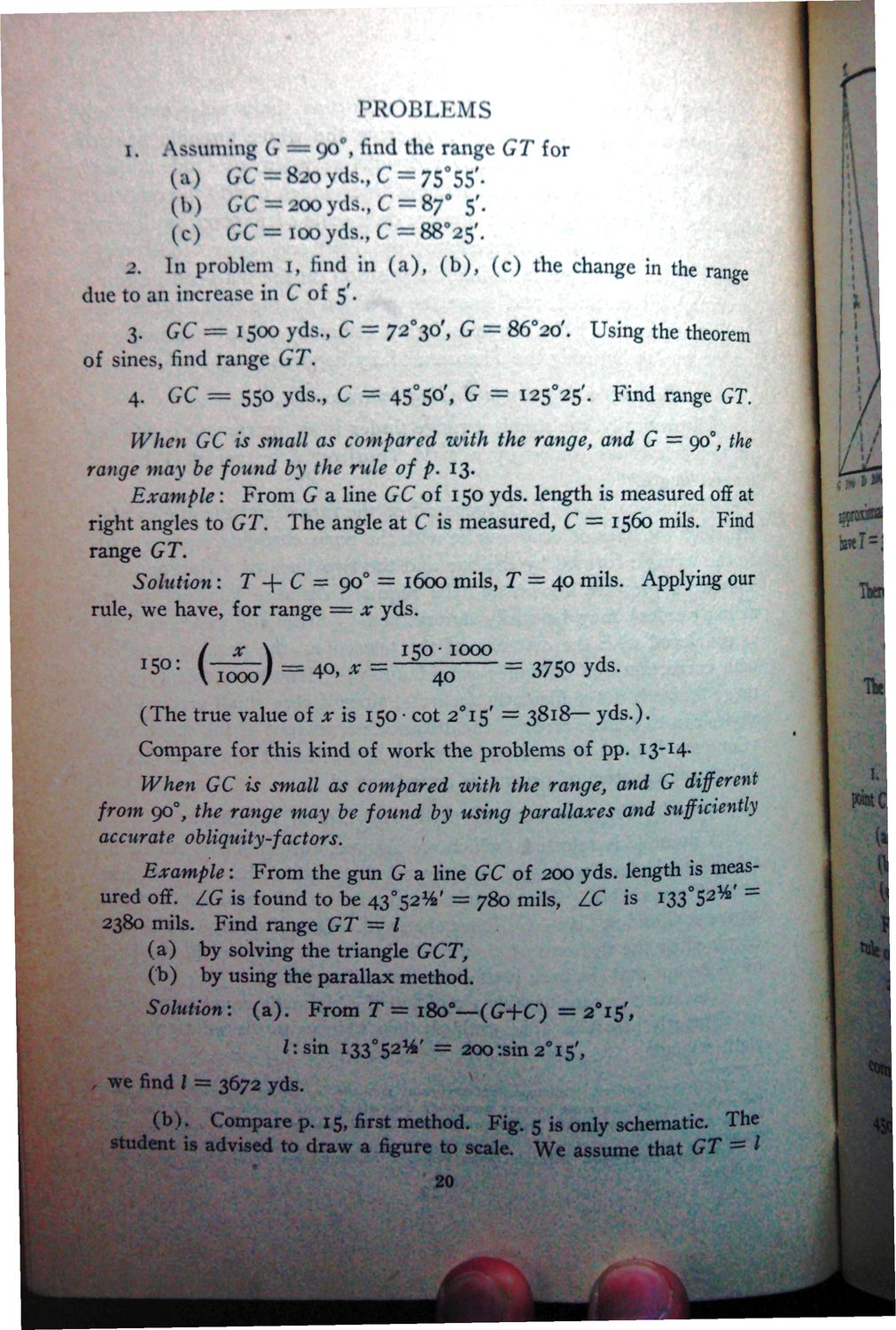| |
| |
Caption: War Publications - WWI Compilation 1923 - Article 46
This is a reduced-resolution page image for fast online browsing.

EXTRACTED TEXT FROM PAGE:
PROBLEMS i. Assuming G = 90°, find the range GT for (a) GC = 8JO yds., C = 75°55'(t>) GC = 200 yd*., C = 87° 5'. (c) CC = 100 yds., C = 88*25'. 2. In problem 1, find in ( a ) , (b), (c) the change in the range due to an increase in C of 5'. 3. GC = 1500 yds., C as 72°3°'> of sines, find range GT* 4. G " 86°2o'. Using the theorem ^ C = 550 yds., C = 45°50'> G = I25°25'. Find range GT. 0 When GC is small as compared with the range, and G = 90 , the range may be found by the rule of p. 13. Example: From G a line GC of 150 yds. length is measured off at right angles to GT. The angle at C is measured, C = 1560 mils. Find range GT. 1600 mils, T = 40 mils. Applying our Solution: T + C = 90 x yds. rule, we have, for range 150 x 1000 40, * 150-1000 40 3750 yds. (The true value of x is 150 • cot 2*15' = 3818— yds.). Compare for this kind of work the problems of pp. I3" 4When GC is small as compared with the range, and G different from 90°, the range may be found by using parallaxes and sufficiently factors Example: 200 ured off. LG is found to be 43°52%' == 780 LC is i 3 3 ° 5 ^ 2380 Find range GT I (a) by solving the triangle GCT, (b) by using the parallax method 0 Solution: ( a). From T 180 (G+C) 2 IS', lisin i33°52%' = 20o:sin2°is', we find / 3672 yds. / I (b). Compare p. 15, first method. Fig. 5 is only schematic. The student is advised to draw a figure to scale. We 20
| |